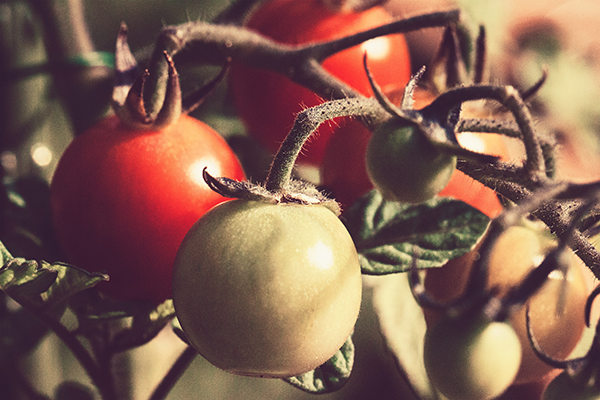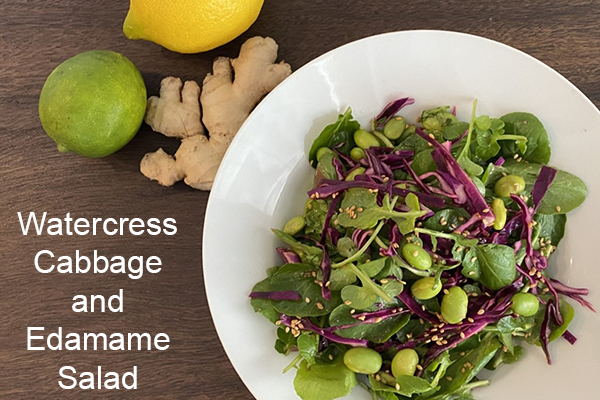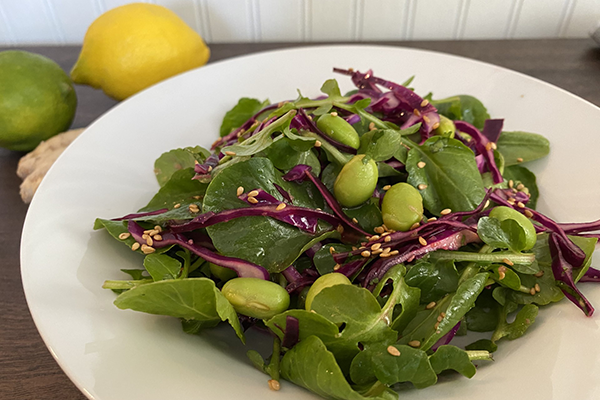Yoga’s principles can teach us to pay attention to what our bodies need for nourishment. They can also encourage us to consider how the choices we make related to our food and where it comes from can affect other living beings on the planet. Part 1 of this blog series reviewed how the yamas, yoga’s moral disciplines, can guide our relationship with food. In this post, we’ll explore how the niyamas can continue shape our food philosophy.
Think like a yogi to find balance in your eating. #yoga #nutrition #saslife Click To TweetThe Niyamas
Niyamas refer to positive duties or observances and are thought of as recommended habits for healthy living and spiritual existence. As you read through the five niyamas below, you may notice some overlap with concepts mentioned in the previous blog since all of the limbs of yoga build on one another.
Saucha: purity
- Think about where your food comes from.
- Educate yourself on why food quality counts.
- Choose more real, high-quality foods and fewer processed food-like products.
Santosha: contentment
- Accept where you are in your nutrition and health journey.
- Slow down and ask yourself these three questions to help you feel more satisfied from your food.
- Practice mindful eating.
Tapas: self-discipline; training your senses
- Recognize your emotional triggers.
- Stimulate your senses by enhancing the flavor of real foods.
- Develop an appreciation for preparing foods using FASS (fat, acid, sweet, salt) to balance flavors.
- Train your palate to adjust to new tastes.
Svadhyaya: self-study, inner exploration
- Be curious. Observe how you feel after eating different foods and combinations of foods.
- Let go of eating “rules” that don’t serve you.
- Find what works best for you, allowing your body ample time to adjust to a new way of eating.
Ishvara Pranidhana: surrender to a higher power
- Make your best effort to eat well, and then practice letting go of attachment to a specific outcome.
- Trust that your body, once in proper alignment, will tell you what, when and how much to eat.
- Once you reach a place where your body recognizes hunger and satiety cues, eat intuitively.
If you’d like to dive deeper into how the niyamas can relate to nutrition, check out The Yoga of Nutrition – Living the Yamas and Niyamas: Part 2.
Watercress, Cabbage and Edamame Salad
Makes 4 servings
Recipe from: Rebecca Katz
PRINT RECIPE
Ingredients
For the salad
1 cup frozen shelled organic edamame, thawed
freshly squeezed lemon juice (can use lime if preferred)
sea salt
2 cups tightly packed watercress
2 cups shredded purple cabbage
2-3 tsp sesame seeds, toasted
For the cilantro-lime vinaigrette dressing (makes extra)
½ cup cilantro
½ cup extra-virgin olive oil
1 tsp lime zest
3 Tbsp freshly squeezed lime juice
1 tsp grated fresh ginger
½ tsp Grade A Dark Amber maple syrup
½ tsp salt
Instructions
- Rinse the edamame well and mix with a spritz of lemon or lime juice and a pinch of sea salt.
- Combine with watercress and cabbage.
- Put all the dressing ingredients in a small food processor and process about a minute, until smooth.*
- Dress with about ⅓ cup of the vinaigrette just before serving.
- Top with toasted sesame seeds and serve immediately.
Notes
*If you prefer not to use a food processor for the dressing, you can finely chop the cilantro and add ingredients to a small jar and shake well.
To shred cabbage without a food processor, put the cabbage on a cutting board with the stem side down. Using a sharp chef’s knife, cut it in half from top to bottom, then use the tip of the knife to remove the core. Put the halves on the cutting board flat side down and cut in half again. Now you have manageable pieces that you can cut into very thin slices.





